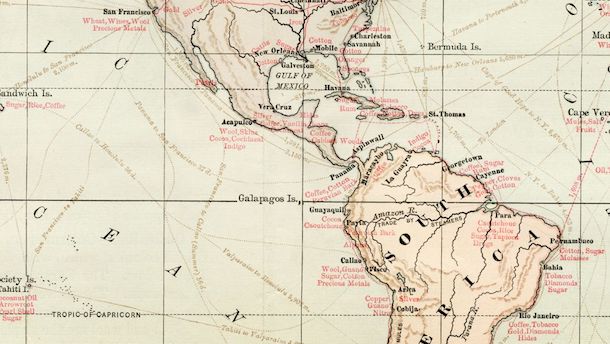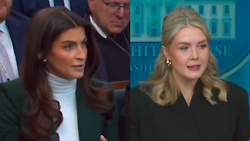 
Highlights
- The Pacific Alliance and Mercosur have put aside their political differences as both blocs seek to reduce trade barriers.
- The Pacific Alliance will continue to face challenges in increasing trade within its bloc as its members continue to trade more with countries outside the bloc than with those inside it.
- The Pacific Alliance will speed up its trade negotiations next year with Mercosur and countries that are part of the Trans-Pacific Partnership.
Latin America's two largest trade blocs, the Common Market of the South (known by its Spanish acronym, Mercosur) and the Pacific Alliance, are taking small steps on the path to convergence. The fall of the left in Mercosur's two largest economies, Argentina and Brazil, and the U.S. decision to renegotiate NAFTA with Mexico have provided the organizations an opportunity to put aside their differences and move forward on their own trade negotiations. Of Trade and Ideology
The Pacific Alliance is composed of Mexico, Peru, Chile and Colombia, whose combined gross domestic products top $2.2 trillion and whose populations total more than 220 million. Their economies are more open to free trade, and they have sought to take advantage of their location on the eastern edge of the Pacific Ocean to expand commerce with Asia. But the bloc wasn't created just to gain bargaining power in trade negotiations with Asian countries. The alliance was first envisioned in a meeting in Lima, Peru, in 2011, when geographic barriers such as the Andean Mountains were not the only impediments to deeper trade integration in Latin America. The region had clear ideological divisions. On one hand, there were the countries led by Venezuela's Bolivarian revolution and Mercosur. On the other hand, there was a group led by Mexico and Peru that tried to counter this ideological influence by forming a trade bloc.
The Bolivarian revolution and Mercosur shared some left-wing characteristics, such as anti-U.S. sentiment and trade protectionism. The high point of that relationship came in 2012, when Mercosur included Venezuela as a full member. That was the same year that the Pacific Alliance signed its first agreement. Mercosur countries perceived the creation of that organization by the closest allies of the United States in Latin America as a counterbalance to Mercosur and the Bolivarian revolution. Brazil criticized the bloc frequently and didn't see its formation as a way to promote trade integration.
Freedom in the Pacific
Mercosur was created to form a common market with a common external tariff where all full member countries have a veto power in trade negotiations. But this wasn't the idea behind the Pacific Alliance. It was based on a free trade agreement among its members, giving them more freedom to negotiate bilateral deals with other countries and economic blocs. And negotiating as a bloc is also easier because the Pacific Alliance doesn't have Mercosur's rules on consensus. That's why the alliance's expansion, for example, doesn't necessarily lead to more constraints on the foreign trade policies of its members because no rule prevents a country from pursuing a bilateral deal. And the Pacific Alliance is growing. Costa Rica and Panama want to join as full members, and other countries, including some Mercosur members such as Paraguay, have been admitted as observers. In addition, Chile, Peru and Colombia have agreed to integrate their stock markets through the creation of the Latin American Integrated Market (MILA). This is Latin America's second-largest stock market, behind Brazil's. The goal is to incorporate Mexico's stock market as well and make MILA the largest stock market in the region.
However, the Pacific Alliance hasn't been able to foster more trade among its members because most of its economies, with the exception of Mexico, are dependent on commodity exports. And no member has another as a main trade partner. Mexico and Colombia are tied to the United States, and exports to China drive trade for Chile and Peru. In Mercosur, Brazil is the main partner for Argentina and Paraguay. Despite this lack of connection, the Pacific Alliance occasionally pulls together to negotiate as a bloc when that gives it an advantage. It is currently holding two major trade negotiations: with Mercosur and with countries in the Trans-Pacific Partnership.
On Dec. 21, the Pacific Alliance will meet with Mercosur in Brasilia, Brazil, where they will discuss the reduction of trade and non-trade tariffs. These talks have benefited greatly from the political and economic changes underway in Argentina and Brazil that have helped reduce the old ideological tensions between the two blocs. In Argentina, President Mauricio Macri has announced a series of economic reforms covering taxes, labor, pensions and trade, while Brazilian President Michel Temer will implement an ambitious plan next year to privatize about 60 state-owned companies. In addition, Mercosur distanced itself from Venezuela by expelling it from the bloc. Member countries argued that Venezuela no longer respected the organization's democratic principles.
Powered by the NAFTA Renegotiation
Another factor helping the Mercosur negotiations gain steam was the U.S. decision to renegotiate the North American Free Trade Agreement (NAFTA). The threat of losing some trade with the United States has forced Mexico, the Pacific Alliance's largest economy, to look elsewhere. Mercosur is by no means a comparable alternative because the United States is a much larger market and absorbs about 80 percent of its exports. Nonetheless, Mexico could use the bloc to gain leverage in NAFTA renegotiations by threatening to find other sources of agricultural imports, such as corn and soybeans.
In fact, Mexican agribusiness companies and government officials have visited Argentina and Brazil this year to negotiate importing such crops as wheat, soybeans and corn. These negotiations have made some progress. In a first for Argentina, it will export wheat to Mexico in December. The first shipment will be just 30,000 tons, however, as Mexico wants to start with small amounts and examine its quality. However, the goal is to gradually increase the volumes.
The Pacific Alliance is also negotiating with Australia, Canada, New Zealand and Singapore. After the United States withdrew from talks on the Trans-Pacific Partnership (TPP) earlier this year, the Latin American bloc has been trying to open talks with the remaining TPP countries. All the members of the Pacific Alliance, except Colombia, were part of the TPP negotiations. Last month, a round of negotiations with Australia, Canada, New Zealand and Singapore was held in Colombia in which participants reached agreements on services, government procurement and the rules of origin. Another round is set for the first quarter of next year in Australia. These negotiations haven't included Japan, because it already has trade agreements with Mexico, Peru and Chile and is concluding one with Colombia.
While U.S. decisions on NAFTA and TPP have created new opportunities for the Pacific Alliance, the bloc will continue to face major challenges in fostering trade within the association, because most of their economies depend on exporting commodities to China and the United States. However, the bloc will continue to take advantage of its geographic location and of its economic and trade openness as it strengthens ties in 2018 with other countries that border the Pacific Ocean as well as with those belonging to its counterpart in Latin America, Mercosur.
This article originally appeared on Stratfor.com
|
|







